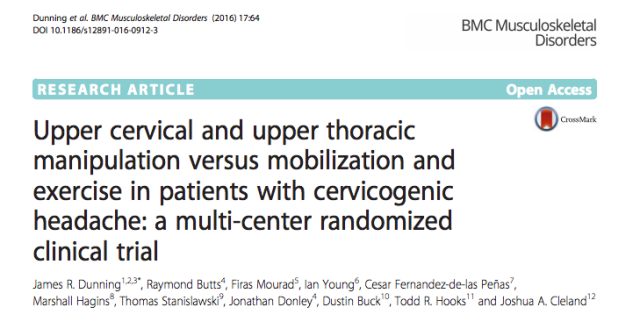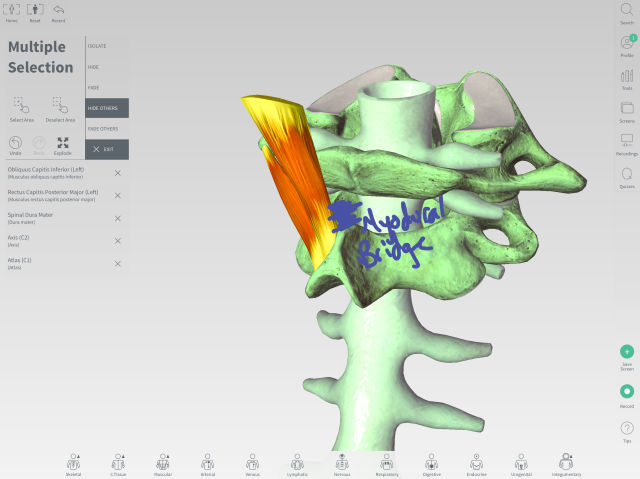
Conclusions:
The results of the current study demonstrated that patients with CH who received cervical and thoracic manipulation experienced significantly greater reductions in headache intensity, disability, headache frequency, headache duration, and medication intake as compared to the group that received mobilization and exercise; furthermore, the effects were maintained at 3 months follow-up. Future studies should examine the effectiveness of different types and dosages of manipulation and include a long-term follow-up.
A strong randomized study by the AAMT group just released this year, which will more than likely result in critical chatter from the mobilization clan. Nevertheless, a compelling difference between groups and confirms, to me clinically at least, the difference between the two manual interventions for this subgroup of headache patients. If appropriate, I find upper cervical manipulation more comfortable, greater improvements in pain and changes in FRT for my patients. Figure out what is best for you and your patients, but as always with Dr. Dunning’s work, the article is open access so take advantage of that and have a read for yourself.

To go along with a clinical study above on cervicogenic headaches, this article by Enix, et al in 2014provides histological, anatomical and clinical implications to the cervical myodural bridge. This basically implies the myofascial connection between Rectus Capitis Posterior Major and Obliqques Capitis Inferior with the dural mater. See picture below from Complete Anatomy Application:
 |
| 3d4Medical - Harrison Vaughan |
Considering the amount of tone and “facilitation” that can occur in these muscles as a dynamic stabilizer of the cervical spine—the connection to the cervical dura mater, which is dense with nocioceptors—could implicate reasons for symptoms we treat: cervicogenic headaches, tension-type headaches or even dizziness.
Modulation of this region, through arthrogenic manipulation > mobilization as in Dunning’s work (explanations of possibly why manipulation was better than mobilization in the previous study may give reasons…), or more of a myogenic approach through soft tissue work can be necessary clinically. The debate of joint vs soft tissue as main nocioceptive peripheral input continues.
Have any articles, youtube videos or other information you would like to share on my series? Just email me! harrisonvaughanpt@gmail.com.
You can also sign up to receive emails and further information on my blog at http://intouchpt.wordpress.com
Thanks for reading and always welcome clinical chit-chatting.
edit - Thanks for sharing Harrison! I often cite Dunning's research in my Spinal Manipulation Seminars. If I have to play devil's advocate here, it seems one of the only recent researchers showing benefits of Spinal Manipulation over mobilization either short or long term is Dunning. Despite the above seemingly being a multi-center study, were all of the clinicians trained by Dunning and prefer manipulation over other treatments as a primary focus? If so, there may unintended personal equipoise instead of clinical. This could affect outcomes, what do you think?
- E
Interested in live cases where I apply this approach and integrate it with pain science, manual therapy, repeated motions, IASTM, with emphasis on patient education? Check out Modern Manual Therapy!
Keeping it Eclectic...















Post a Comment
Post a Comment